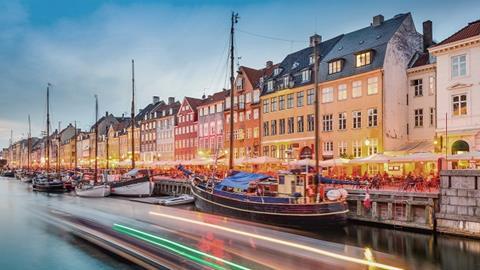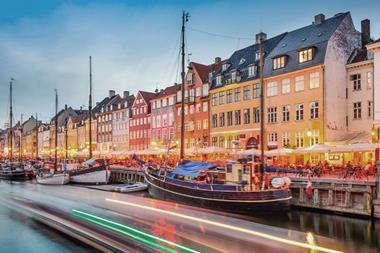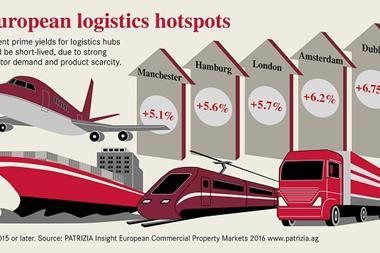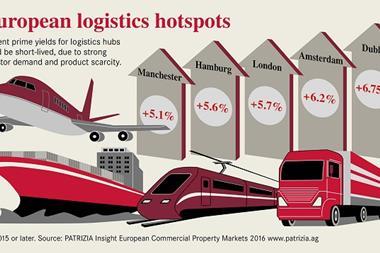A lack of space requires conventional and innovative solutions for dealing with urban growth and a city’s legacy.

SPONSORED CONTENT FROM PATRIZIA
“Buy land, they’re not making it anymore.” This quote, attributed to the American author Mark Twain, is as valid today as it was back in the beginning of the 20th Century.
We haven’t exactly run out of land, it’s just in short supply where most people want to live. Urbanization requires an efficient use of this limited space.
Urban renewal: repurposing run-down buildings
Take, for example, the case of the abandoned Gerresheimer glassworks district in Dusseldorf, Germany. Founded in 1864, by 1900 the factory had become the largest bottle manufacturer in the world, to be shut down only in 2005. The area then lay derelict for years.
Until, that is, city planners identified the glassworks as an ideal area for an urban renewal project. Crucial to the development is the integration of the landmarked buildings into the project and new-builds in green areas.
In Munich, the site of the former Siemens facilities will soon be undergoing a similar rejuvenation. Known as the Hofmann Höfe, the urban district in the south of the city will see the development of around 1,000 residences.
“The aim is to create high-density residential or commercial properties in highly accessible areas in the most efficient way.”
The Siemens office blocks will be demolished and replaced by a balanced mix of new-build private accommodation and subsidized housing over seven residential buildings. The Siemens woods will be protected, enhancing the overall living space.
Both projects illustrate how innovative conversion work on derelict buildings can create the next up-and-coming districts — and respect a city’s legacy.
The aim is to create high-density residential or commercial properties in highly accessible areas in the most efficient way.
Urban expansion: the only way is up?
In London, the trend is to build down, by expanding basement areas, but also to build up. And not just with landmark skyscrapers with cool official and unofficial names, such as The Shard, The Walkie-Talkie or The Cheesegrater. It’s also about building on top of existing flats, offices and retail space.
One such example is Trocoll House in Barking & Dagenham, just a 14-minute tube ride from Central London. This PATRIZIA-led project will not only see the 1960s building renovated and expanded, it will include a two-storey extension of the original building. Most importantly perhaps for the local residents, it will also retain an existing landmark: the popular local pub.
Located in a thriving part of London, Trocoll House will offer larger-than-average rental apartments with great amenities and spaces that have modern-day living trends in mind.
Urban new-build and new districts
There’s still plenty of room for the conventional approach, but often with a clever twist.
In Manchester, increased demand for high quality rented living space from professionals in the city led to the development of a new area in the centre that extends over 17 acres: First Street Manchester.
The careful blend of culture, leisure, retail and office space together with residential property is one example of how long-term projects can boost the inner city and urban life.

PATRIZIA is leading the development of 624 apartments within four towers of 23 floors.
The innovative twist is met by the raised garden spaces over 2,300 square metres, making it one of the largest green spaces in the city. Considerably higher than your average British garden.
Urbanization can be undertaken in many forms, but today the focus is often on getting the right mix of property and environment, as well as legacy and local needs.
More trends to come
There’s land, but it’s often scarce, built-up or run-down. Today, there’s an art to exploiting each available plot, building or urban area.
David Christmann, head of real estate development Germany South at PATRIZIA
About PATRIZIA Immobilien AG
PATRIZIA Immobilien AG has been active as an investment manager on the real estate market in 15 European countries for more than 30 years. PATRIZIA’s range includes the acquisition, management, value increase and sale of residential and commercial real estate over own licensed investment platforms. As one of the leading real estate investment companies in Europe PATRIZIA operates as a respected business partner of large institutional investors and retail investors in all major European countries. Currently, the Company manages real estate assets worth around EUR 17 billion, primarily as a co-investor and portfolio manager for insurance companies, pension fund institutions, sovereign funds, savings and cooperative banks.





























No comments yet